Skitouring bindings
.

- - 38 %
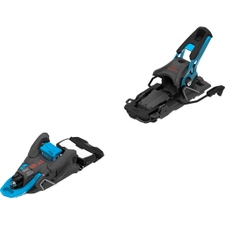 SalomonS/Lab Shift MNC 13 incl. Stoppers Alpine Touring Bindings Blue / BlackMSRP 529,95 €329,00 €Available Sizes:90100110120
SalomonS/Lab Shift MNC 13 incl. Stoppers Alpine Touring Bindings Blue / BlackMSRP 529,95 €329,00 €Available Sizes:90100110120
- - 38 %
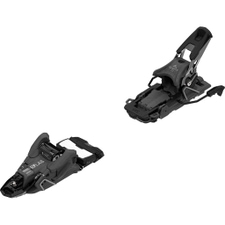 SalomonS/Lab Shift MNC 13 incl. Stoppers Alpine Touring Bindings BlackMSRP 529,95 €329,00 €Available Sizes:90100110120
SalomonS/Lab Shift MNC 13 incl. Stoppers Alpine Touring Bindings BlackMSRP 529,95 €329,00 €Available Sizes:90100110120
- - 38 %
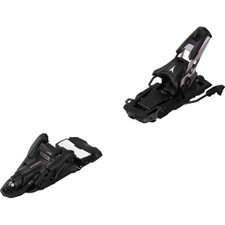 AtomicShift 13 MNC incl. Stoppers Alpine Touring Bindings Black / SilverMSRP 529,95 €329,00 €Available Sizes:90
AtomicShift 13 MNC incl. Stoppers Alpine Touring Bindings Black / SilverMSRP 529,95 €329,00 €Available Sizes:90
- - 23 %
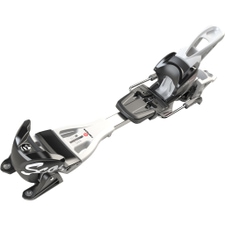 FritschiScout 11 inkl. 90 mm Stoppers Alpine Touring Bindings BlackMSRP 349,95 €269,00 €Available Sizes:SMXL
FritschiScout 11 inkl. 90 mm Stoppers Alpine Touring Bindings BlackMSRP 349,95 €269,00 €Available Sizes:SMXL
- - 27 %
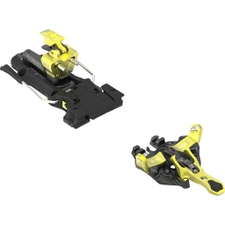 ATKFreeraider 14 incl. Stoppers Alpine Touring Bindings YellowMSRP 618,95 €449,00 €Available Sizes:102108120
ATKFreeraider 14 incl. Stoppers Alpine Touring Bindings YellowMSRP 618,95 €449,00 €Available Sizes:102108120
- - 38 %
 SalomonS/Lab Shift MNC 10 incl. Stoppers Alpine Touring Bindings BlackMSRP 479,95 €299,00 €Available Sizes:90100110120
SalomonS/Lab Shift MNC 10 incl. Stoppers Alpine Touring Bindings BlackMSRP 479,95 €299,00 €Available Sizes:90100110120
- - 40 %
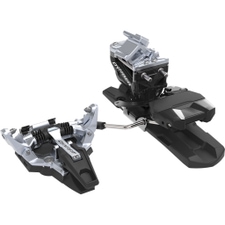 DynafitRadical incl. Stoppers Alpine Touring Bindings NaturalMSRP 499,95 €299,00 €Available Sizes:8292100110
DynafitRadical incl. Stoppers Alpine Touring Bindings NaturalMSRP 499,95 €299,00 €Available Sizes:8292100110
- - 43 %
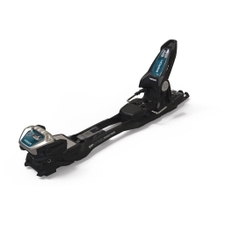 MarkerBaron EPF 13 L incl. Stoppers Alpine Touring Bindings Black / SilberMSRP 399,95 €229,00 €Available Sizes:100110
MarkerBaron EPF 13 L incl. Stoppers Alpine Touring Bindings Black / SilberMSRP 399,95 €229,00 €Available Sizes:100110
- - 21 %
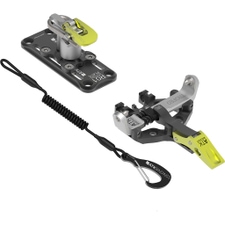 ATKTrofeo Plus incl. Adjustment Plate & Leashes Alpine Touring Bindings Schwarz GelbMSRP 428,95 €339,00 €Available Sizes:46810
ATKTrofeo Plus incl. Adjustment Plate & Leashes Alpine Touring Bindings Schwarz GelbMSRP 428,95 €339,00 €Available Sizes:46810
- - 38 %
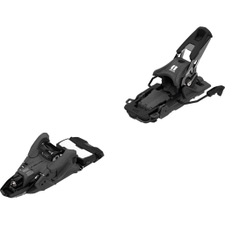 ArmadaN Shift MNC 13 incl. Stoppers Alpine Touring Bindings Armada BlackMSRP 529,95 €329,00 €Available Sizes:90100
ArmadaN Shift MNC 13 incl. Stoppers Alpine Touring Bindings Armada BlackMSRP 529,95 €329,00 €Available Sizes:90100
- - 34 %
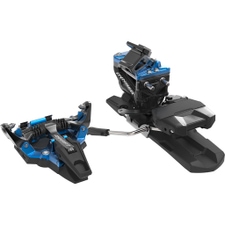 DynafitRadical incl. Stoppers Alpine Touring Bindings BlueMSRP 449,95 €299,00 €Available Sizes:8292100
DynafitRadical incl. Stoppers Alpine Touring Bindings BlueMSRP 449,95 €299,00 €Available Sizes:8292100
- - 17 %
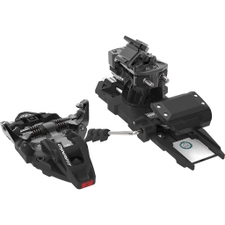 DynafitSt Rotation 14 incl. Stoppers Alpine Touring Bindings MagnetMSRP 599,95 €499,00 €Available Sizes:90105120
DynafitSt Rotation 14 incl. Stoppers Alpine Touring Bindings MagnetMSRP 599,95 €499,00 €Available Sizes:90105120
- - 38 %
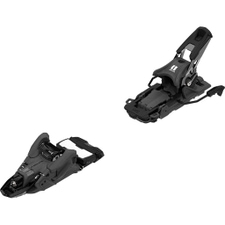 ArmadaShift MNC 10 incl. Stopper Alpine Touring Bindings BlackMSRP 479,95 €299,00 €Available Sizes:110120
ArmadaShift MNC 10 incl. Stopper Alpine Touring Bindings BlackMSRP 479,95 €299,00 €Available Sizes:110120
- - 27 %
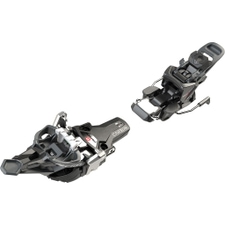 FritschiTecton 13 incl. Stoppers Alpine Touring Bindings Black/ AnthraciteMSRP 599,95 €439,00 €Available Sizes:90100110120
FritschiTecton 13 incl. Stoppers Alpine Touring Bindings Black/ AnthraciteMSRP 599,95 €439,00 €Available Sizes:90100110120
- - 38 %
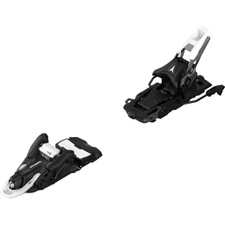 AtomicShift 10 MNC incl. Stoppers Alpine Touring Bindings Black / WhiteMSRP 479,95 €299,00 €Available Sizes:90100110
AtomicShift 10 MNC incl. Stoppers Alpine Touring Bindings Black / WhiteMSRP 479,95 €299,00 €Available Sizes:90100110
- - 42 %
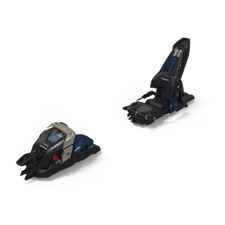 MarkerDuke PT 16 incl. Stoppers Alpine Touring Bindings Black / GunmetalMSRP 599,95 €349,00 €Available Sizes:100125
MarkerDuke PT 16 incl. Stoppers Alpine Touring Bindings Black / GunmetalMSRP 599,95 €349,00 €Available Sizes:100125
- - 20 %
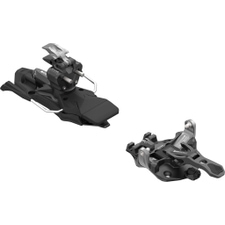 ATKRaider 13 EVO incl. Stoppers Alpine Touring Bindings Black / Black TitaniumMSRP 648,95 €519,00 €Available Sizes:869197102108
ATKRaider 13 EVO incl. Stoppers Alpine Touring Bindings Black / Black TitaniumMSRP 648,95 €519,00 €Available Sizes:869197102108
- - 27 %
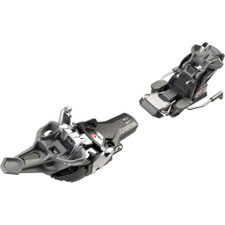 FritschiVipec EVO 12 incl. Stoppers Alpine Touring Bindings Schwarz / WeißMSRP 549,95 €399,00 €Available Sizes:8090100110
FritschiVipec EVO 12 incl. Stoppers Alpine Touring Bindings Schwarz / WeißMSRP 549,95 €399,00 €Available Sizes:8090100110 - - 32 %
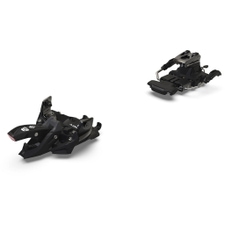 MarkerAlpinist 12 incl. Stoppers Alpine Touring Bindings BlackMSRP 439,95 €299,00 €Available Sizes:90105
MarkerAlpinist 12 incl. Stoppers Alpine Touring Bindings BlackMSRP 439,95 €299,00 €Available Sizes:90105
- - 20 %
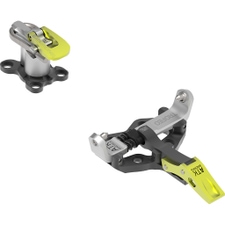 ATKTrofeo Alpine Touring Bindings Schwarz / GelbMSRP 348,95 €279,00 €Available Sizes:6810
ATKTrofeo Alpine Touring Bindings Schwarz / GelbMSRP 348,95 €279,00 €Available Sizes:6810
- - 40 %
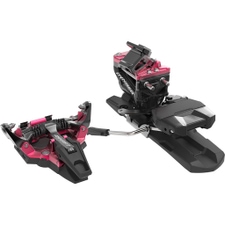 DynafitRadical incl. Stoppers Alpine Touring Bindings FlamingoMSRP 499,95 €299,00 €Available Sizes:8292100
DynafitRadical incl. Stoppers Alpine Touring Bindings FlamingoMSRP 499,95 €299,00 €Available Sizes:8292100
- - 15 %
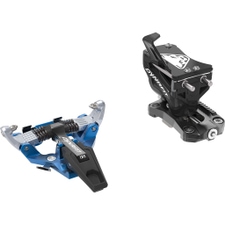 DynafitSpeed Turn incl. Leashes Alpine Touring Bindings BlueMSRP 349,95 €299,00 €One size
DynafitSpeed Turn incl. Leashes Alpine Touring Bindings BlueMSRP 349,95 €299,00 €One size
- - 20 %
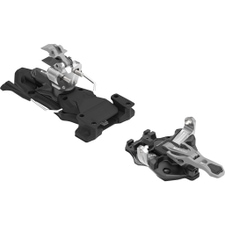 ATKFreeraider 15 EVO incl. Stoppers Alpine Touring Bindings TitaniumMSRP 698,95 €559,00 €Available Sizes:97102108120
ATKFreeraider 15 EVO incl. Stoppers Alpine Touring Bindings TitaniumMSRP 698,95 €559,00 €Available Sizes:97102108120
- - 45 %
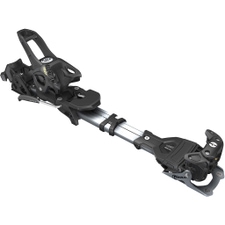 HeadAmbition 12 MN incl. Stoppers Alpine Touring Bindings Solid BlackMSRP 435,00 €239,00 €Available Sizes:95105
HeadAmbition 12 MN incl. Stoppers Alpine Touring Bindings Solid BlackMSRP 435,00 €239,00 €Available Sizes:95105
- - 43 %
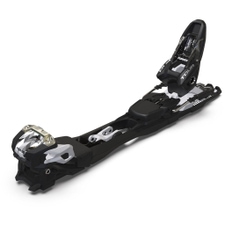 MarkerF10 Tour S 265-325 mm incl. Stoppers Alpine Touring Bindings Black / WhiteMSRP 349,95 €199,00 €Available Sizes:90
MarkerF10 Tour S 265-325 mm incl. Stoppers Alpine Touring Bindings Black / WhiteMSRP 349,95 €199,00 €Available Sizes:90
- - 29 %
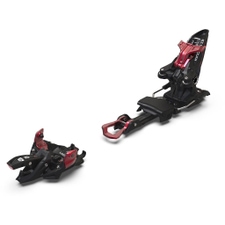 MarkerKingpin 13 incl. Stoppers Alpine Touring Bindings Black / RedMSRP 559,95 €399,00 €Available Sizes:100125
MarkerKingpin 13 incl. Stoppers Alpine Touring Bindings Black / RedMSRP 559,95 €399,00 €Available Sizes:100125
- - 31 %
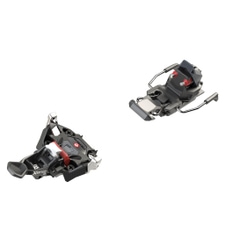 FritschiXenic 10 incl. Stoppers Alpine Touring Bindings Black / RedMSRP 449,95 €309,00 €Available Sizes:8595105
FritschiXenic 10 incl. Stoppers Alpine Touring Bindings Black / RedMSRP 449,95 €309,00 €Available Sizes:8595105
- - 21 %
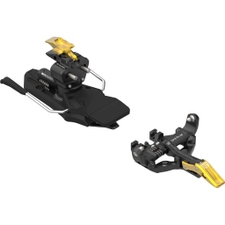 ATKRT 10 EVO incl. Stoppers Alpine Touring Bindings Black / Titanium / GoldMSRP 578,95 €459,00 €Available Sizes:9197
ATKRT 10 EVO incl. Stoppers Alpine Touring Bindings Black / Titanium / GoldMSRP 578,95 €459,00 €Available Sizes:9197
- - 18 %
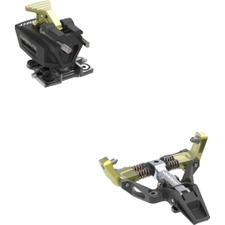 DynafitTLT Superlite 2.0 12 Alpine Touring Bindings Black / YellowMSRP 439,95 €359,00 €One size
DynafitTLT Superlite 2.0 12 Alpine Touring Bindings Black / YellowMSRP 439,95 €359,00 €One size - - 40 %
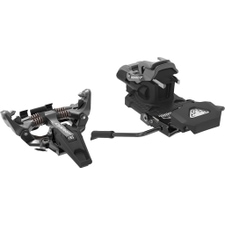 DynafitBlacklight+ incl. Stoppers Alpine Touring Bindings MagnetMSRP 494,95 €299,00 €Available Sizes:7590105
DynafitBlacklight+ incl. Stoppers Alpine Touring Bindings MagnetMSRP 494,95 €299,00 €Available Sizes:7590105
- - 30 %
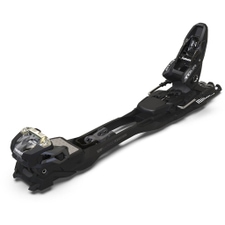 MarkerF12 Tour L EPF 306-365 mm incl. Stoppers Alpine Touring Bindings BlackMSRP 399,95 €279,00 €Available Sizes:100110
MarkerF12 Tour L EPF 306-365 mm incl. Stoppers Alpine Touring Bindings BlackMSRP 399,95 €279,00 €Available Sizes:100110
- - 30 %
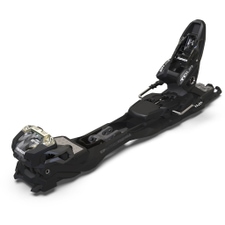 MarkerF12 Tour S EPF 265-325 mm incl. Stoppers Alpine Touring BindingsMSRP 399,95 €279,00 €Available Sizes:100110
MarkerF12 Tour S EPF 265-325 mm incl. Stoppers Alpine Touring BindingsMSRP 399,95 €279,00 €Available Sizes:100110
- - 20 %
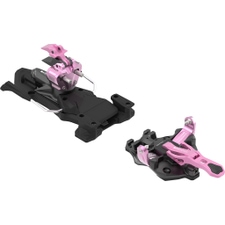 ATKFreeraider 15 EVO incl. Stoppers Alpine Touring Bindings PinkMSRP 698,95 €559,00 €Available Sizes:97102108120
ATKFreeraider 15 EVO incl. Stoppers Alpine Touring Bindings PinkMSRP 698,95 €559,00 €Available Sizes:97102108120
- - 17 %
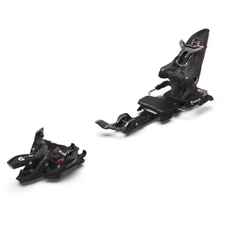 MarkerKingpin M-Werks 12 incl. Stoppers Alpine Touring Bindings Black / RedMSRP 599,95 €499,00 €Available Sizes:100125
MarkerKingpin M-Werks 12 incl. Stoppers Alpine Touring Bindings Black / RedMSRP 599,95 €499,00 €Available Sizes:100125
- - 20 %
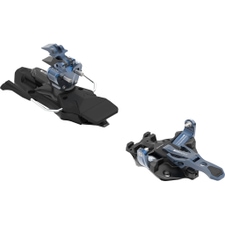 ATKRaider 13 EVO incl. Stoppers Alpine Touring Bindings Dark Blue / Dark BlackMSRP 648,95 €519,00 €Available Sizes:869197102108
ATKRaider 13 EVO incl. Stoppers Alpine Touring Bindings Dark Blue / Dark BlackMSRP 648,95 €519,00 €Available Sizes:869197102108
- - 37 %
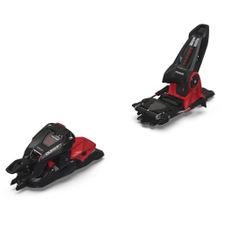 MarkerDuke PT 13 incl. Stoppers Alpine Touring Bindings Black / RedMSRP 549,95 €349,00 €Available Sizes:100
MarkerDuke PT 13 incl. Stoppers Alpine Touring Bindings Black / RedMSRP 549,95 €349,00 €Available Sizes:100
- - 15 %
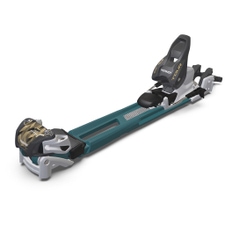 MarkerF5 Jr Tour incl. 90mm Stoppers Alpine Touring Bindings Anthracite / White KidsMSRP 199,95 €169,00 €One size
MarkerF5 Jr Tour incl. 90mm Stoppers Alpine Touring Bindings Anthracite / White KidsMSRP 199,95 €169,00 €One size
- - 17 %
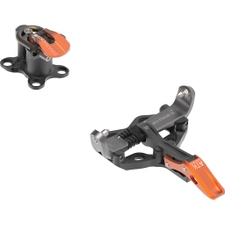 ATKSL World Cup Alpine Touring Bindings Black Titanium OrangeMSRP 478,95 €399,00 €One size
ATKSL World Cup Alpine Touring Bindings Black Titanium OrangeMSRP 478,95 €399,00 €One size
- - 19 %
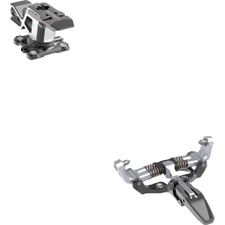 DynafitSuperlite 150 Alpine Touring Bindings Schwarz SilberMSRP 649,95 €529,00 €One size
DynafitSuperlite 150 Alpine Touring Bindings Schwarz SilberMSRP 649,95 €529,00 €One size
- - 33 %
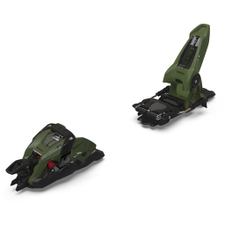 MarkerDuke PT 16 incl. Stoppers Alpine Touring Bindings Green / BlackMSRP 599,95 €399,00 €Available Sizes:100125
MarkerDuke PT 16 incl. Stoppers Alpine Touring Bindings Green / BlackMSRP 599,95 €399,00 €Available Sizes:100125
- - 20 %
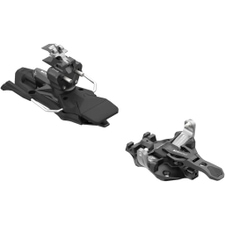 ATKRaider 13 EVO incl. Stoppers Alpine Touring Bindings Black / WhiteMSRP 648,95 €519,00 €Available Sizes:869197102
ATKRaider 13 EVO incl. Stoppers Alpine Touring Bindings Black / WhiteMSRP 648,95 €519,00 €Available Sizes:869197102
- - 21 %
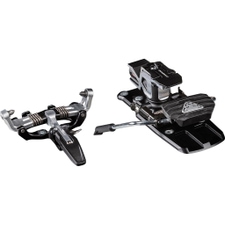 DynafitSuperlite 150 + incl. Stoppers Alpine Touring Bindings Schwarz / SilberMSRP 759,95 €599,00 €Available Sizes:7590105
DynafitSuperlite 150 + incl. Stoppers Alpine Touring Bindings Schwarz / SilberMSRP 759,95 €599,00 €Available Sizes:7590105
- - 29 %
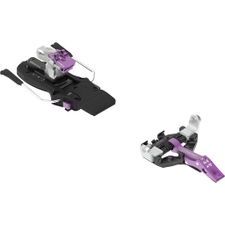 ATKKuluar 9 incl. Stoppers Alpine Touring Bindings Purple / Black / WhiteMSRP 418,95 €299,00 €Available Sizes:91
ATKKuluar 9 incl. Stoppers Alpine Touring Bindings Purple / Black / WhiteMSRP 418,95 €299,00 €Available Sizes:91
- - 20 %
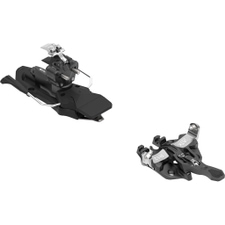 ATKRaider 12 AP incl. Stoppers Alpine Touring Bindings BlackMSRP 598,95 €479,00 €Available Sizes:869197102108
ATKRaider 12 AP incl. Stoppers Alpine Touring Bindings BlackMSRP 598,95 €479,00 €Available Sizes:869197102108
- - 26 %
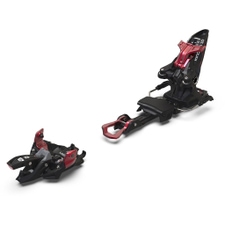 MarkerKingpin 10 incl. Stoppers Alpine Touring Bindings Black / RedMSRP 539,95 €399,00 €Available Sizes:100125
MarkerKingpin 10 incl. Stoppers Alpine Touring Bindings Black / RedMSRP 539,95 €399,00 €Available Sizes:100125
- - 20 %
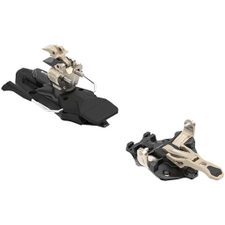 ATKRaider Evo 13 incl. Stopper Alpine Touring Bindings SandMSRP 648,95 €519,00 €Available Sizes:9197102108
ATKRaider Evo 13 incl. Stopper Alpine Touring Bindings SandMSRP 648,95 €519,00 €Available Sizes:9197102108
- - 31 %
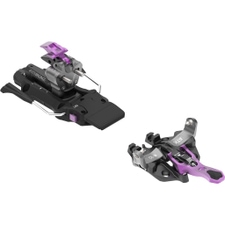 ATKRaider 10 incl. Stoppers Alpine Touring Bindings Purple / Black / Titanium PurpleMSRP 578,95 €399,00 €Available Sizes:8691
ATKRaider 10 incl. Stoppers Alpine Touring Bindings Purple / Black / Titanium PurpleMSRP 578,95 €399,00 €Available Sizes:8691
- - 25 %
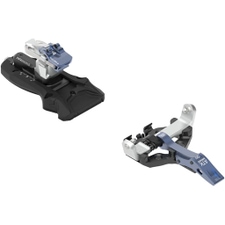 ATKKuluar 9 LT incl. Leash & Crampons Slot Alpine Touring Bindings Black / DarkblueMSRP 398,95 €299,00 €Available Sizes:9
ATKKuluar 9 LT incl. Leash & Crampons Slot Alpine Touring Bindings Black / DarkblueMSRP 398,95 €299,00 €Available Sizes:9
- - 20 %
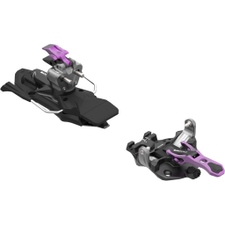 ATKRaider 11 EVO incl. Stoppers Alpine Touring Bindings Purple / Black / Titanium PurpleMSRP 648,95 €519,00 €Available Sizes:869197102108
ATKRaider 11 EVO incl. Stoppers Alpine Touring Bindings Purple / Black / Titanium PurpleMSRP 648,95 €519,00 €Available Sizes:869197102108
- - 20 %
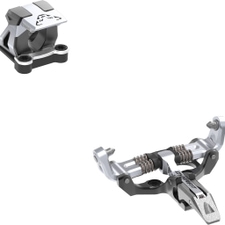 DynafitLow Tech Race 105 Manu Lock Alpine Touring Bindings SilberMSRP 499,95 €399,00 €One size
DynafitLow Tech Race 105 Manu Lock Alpine Touring Bindings SilberMSRP 499,95 €399,00 €One size
- - 31 %
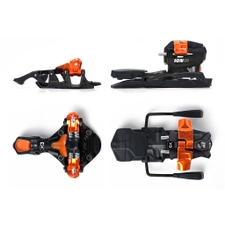 G3ION 12 incl. Stoppers Alpine Touring Bindings BlackMSRP 578,95 €399,00 €Available Sizes:85
G3ION 12 incl. Stoppers Alpine Touring Bindings BlackMSRP 578,95 €399,00 €Available Sizes:85 - - 16 %
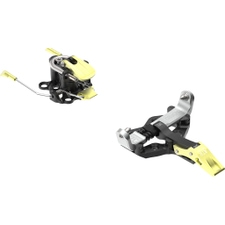 ATKTrofeo incl. Stoppers Alpine Touring Bindings Black / White / YellowMSRP 448,95 €379,00 €One size
ATKTrofeo incl. Stoppers Alpine Touring Bindings Black / White / YellowMSRP 448,95 €379,00 €One size
- - 56 %
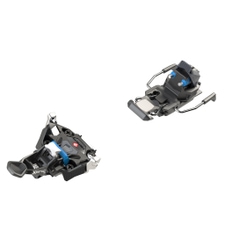 FritschiXenic 7 incl. Stoppers Alpine Touring Bindings Blue / RedMSRP 449,95 €199,00 €Available Sizes:8595
FritschiXenic 7 incl. Stoppers Alpine Touring Bindings Blue / RedMSRP 449,95 €199,00 €Available Sizes:8595
- - 43 %
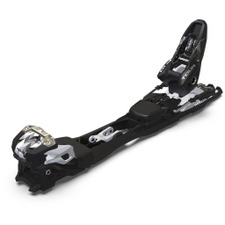 MarkerF10 Tour L EPF 306-365 mm incl. Stoppers Alpine Touring Bindings Black / whiteMSRP 349,95 €199,00 €Available Sizes:90100
MarkerF10 Tour L EPF 306-365 mm incl. Stoppers Alpine Touring Bindings Black / whiteMSRP 349,95 €199,00 €Available Sizes:90100
- - 20 %
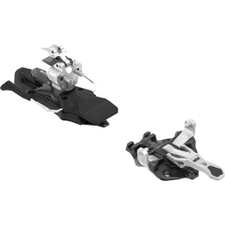 ATKRaider 11 EVO incl. Stopper Alpine Touring Bindings WhiteMSRP 648,95 €519,00 €Available Sizes:869197102108
ATKRaider 11 EVO incl. Stopper Alpine Touring Bindings WhiteMSRP 648,95 €519,00 €Available Sizes:869197102108
- - 25 %
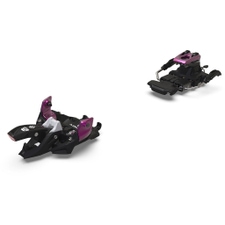 MarkerAlpinist 8 incl. Stoppers Alpine Touring Bindings Black / PurpleMSRP 399,95 €299,00 €Available Sizes:90105
MarkerAlpinist 8 incl. Stoppers Alpine Touring Bindings Black / PurpleMSRP 399,95 €299,00 €Available Sizes:90105
- - 20 %
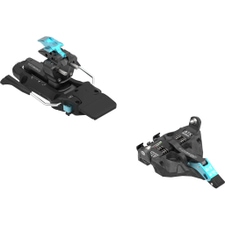 ATKC-Raider 10 inkl. Stopper Alpine Touring Bindings Black / LightblueMSRP 498,95 €399,00 €Available Sizes:869197
ATKC-Raider 10 inkl. Stopper Alpine Touring Bindings Black / LightblueMSRP 498,95 €399,00 €Available Sizes:869197 - - 26 %
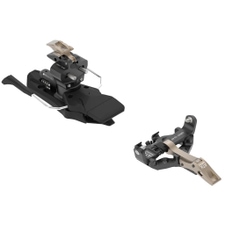 ATKCrest 10 AP Alpine Touring Bindings Dark BronzeMSRP 498,95 €369,00 €Available Sizes:869197102
ATKCrest 10 AP Alpine Touring Bindings Dark BronzeMSRP 498,95 €369,00 €Available Sizes:869197102 - - 11 %
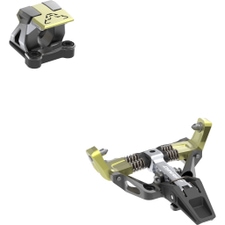 DynafitLow Tech Race 115 Manu Lock Alpine Touring BindingsMSRP 449,95 €399,00 €One size
DynafitLow Tech Race 115 Manu Lock Alpine Touring BindingsMSRP 449,95 €399,00 €One size
- - 31 %
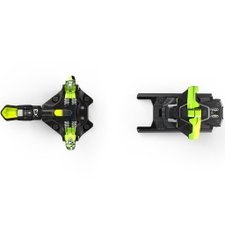 G3ZED 12 incl. Stoppers Alpine Touring Bindings BlackMSRP 575,90 €399,00 €Available Sizes:85
G3ZED 12 incl. Stoppers Alpine Touring Bindings BlackMSRP 575,90 €399,00 €Available Sizes:85 - - 18 %
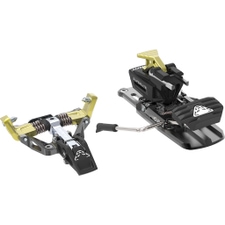 DynafitSuperlite 175+ incl. Stoppers Alpine Touring Bindings Schwarz / GelbMSRP 559,95 €459,00 €Available Sizes:7590105
DynafitSuperlite 175+ incl. Stoppers Alpine Touring Bindings Schwarz / GelbMSRP 559,95 €459,00 €Available Sizes:7590105
- - 20 %
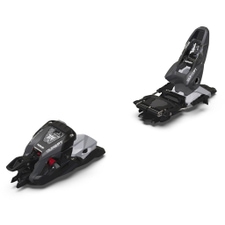 MarkerDuke PT 11 incl. Stoppers Alpine Touring Bindings Anthracite / GreyMSRP 499,95 €399,00 €Available Sizes:100125
MarkerDuke PT 11 incl. Stoppers Alpine Touring Bindings Anthracite / GreyMSRP 499,95 €399,00 €Available Sizes:100125
- - 22 %
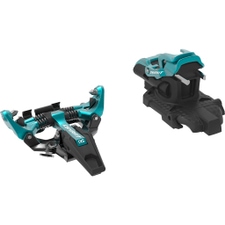 DynafitBlacklight Alpine Touring Bindings Light BlueMSRP 509,95 €399,00 €One size
DynafitBlacklight Alpine Touring Bindings Light BlueMSRP 509,95 €399,00 €One size
- - 31 %
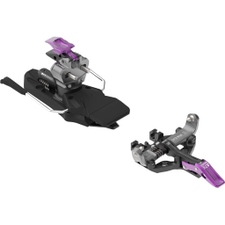 ATKRT 8 EVO incl. Stoppers Alpine Touring Bindings Black / Titanium /PurpleMSRP 578,95 €399,00 €Available Sizes:869197
ATKRT 8 EVO incl. Stoppers Alpine Touring Bindings Black / Titanium /PurpleMSRP 578,95 €399,00 €Available Sizes:869197
- - 12 %
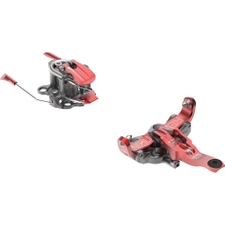 ATKRevolution World Cup incl. Stoppers Alpine Touring Bindings Red TitaniumMSRP 648,95 €569,00 €One size
ATKRevolution World Cup incl. Stoppers Alpine Touring Bindings Red TitaniumMSRP 648,95 €569,00 €One size
- - 14 %
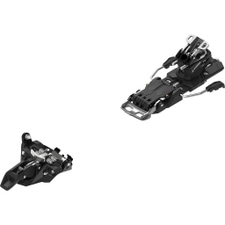 AtomicBackland Summit 12 inkl. Stoppers Alpine Touring Bindings Black / GunmetalMSRP 439,95 €379,00 €Available Sizes:90
AtomicBackland Summit 12 inkl. Stoppers Alpine Touring Bindings Black / GunmetalMSRP 439,95 €379,00 €Available Sizes:90
- - 25 %
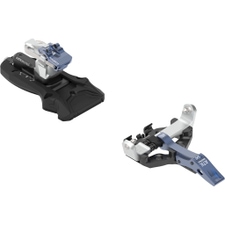 ATKKuluar 12 LT Alpine Touring Bindings Dark BlueMSRP 398,95 €299,00 €One size
ATKKuluar 12 LT Alpine Touring Bindings Dark BlueMSRP 398,95 €299,00 €One size
- - 26 %
 ATKCrest 10 AP Alpine Touring Bindings RedMSRP 498,95 €369,00 €Available Sizes:869197102
ATKCrest 10 AP Alpine Touring Bindings RedMSRP 498,95 €369,00 €Available Sizes:869197102 - - 22 %
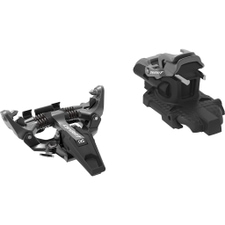 DynafitBlacklight Alpine Touring Bindings MagnetMSRP 509,95 €399,00 €One size
DynafitBlacklight Alpine Touring Bindings MagnetMSRP 509,95 €399,00 €One size
- - 27 %
 ATKHaute Route 10 Plus Alpine Touring Bindings Lightblue / BlackMSRP 548,95 €399,00 €One size
ATKHaute Route 10 Plus Alpine Touring Bindings Lightblue / BlackMSRP 548,95 €399,00 €One size
- - 17 %
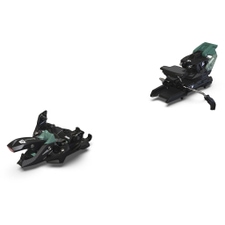 MarkerCruise 12 incl. Stoppers Alpine Touring Bindings Black / GreenMSRP 479,95 €399,00 €Available Sizes:90105
MarkerCruise 12 incl. Stoppers Alpine Touring Bindings Black / GreenMSRP 479,95 €399,00 €Available Sizes:90105
- - 42 %
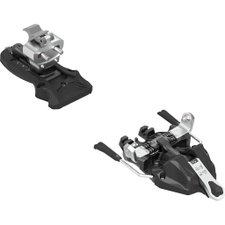 ATKFront 9 incl. Stoppers Alpine Touring Bindings Black / White TitaniumMSRP 518,95 €299,00 €Available Sizes:9197
ATKFront 9 incl. Stoppers Alpine Touring Bindings Black / White TitaniumMSRP 518,95 €299,00 €Available Sizes:9197



Having found the perfect touring ski, you still need a fitting binding. As with skis, there are lots of differences. Whether you are a uphill oriented mountaineer, downhill oriented freerider or ski touring racer. What is important, is that the binding suits your needs as well as fits the tours you have planned.
As of this, there are different systems: Frame and tec bindings, as well as varying weights, release values, widths and release mechanisms by the different manufacturers such as ATK, Marker, Dynafit, Fritschi or G3.
The binding must fit the touring ski
The decision on what binding you should take is based on what kind of tour you are planning to do and what ski you are using. Obviously, a uphill oriented touring ski will ask for a uphill oriented binding with low weight, while when using freeride touring skis, you will rather pick a binding that is a bit more stable but also heavier with a higher degree of power transfer. And when using a racing touring ski, you are best equipped with a racing touring binding.
So most important factors are whether you are more the uphill or downhill tourer, in what kind of terrain you are going and of course your style of skiing.
The different binding systems
Generally, there are two different types of bindings: The frame bindings and the pin- or so-called tec bindings. The difference between these two is in how the boot is secured in the binding and due to this, how they function, how they release and how they are handled.
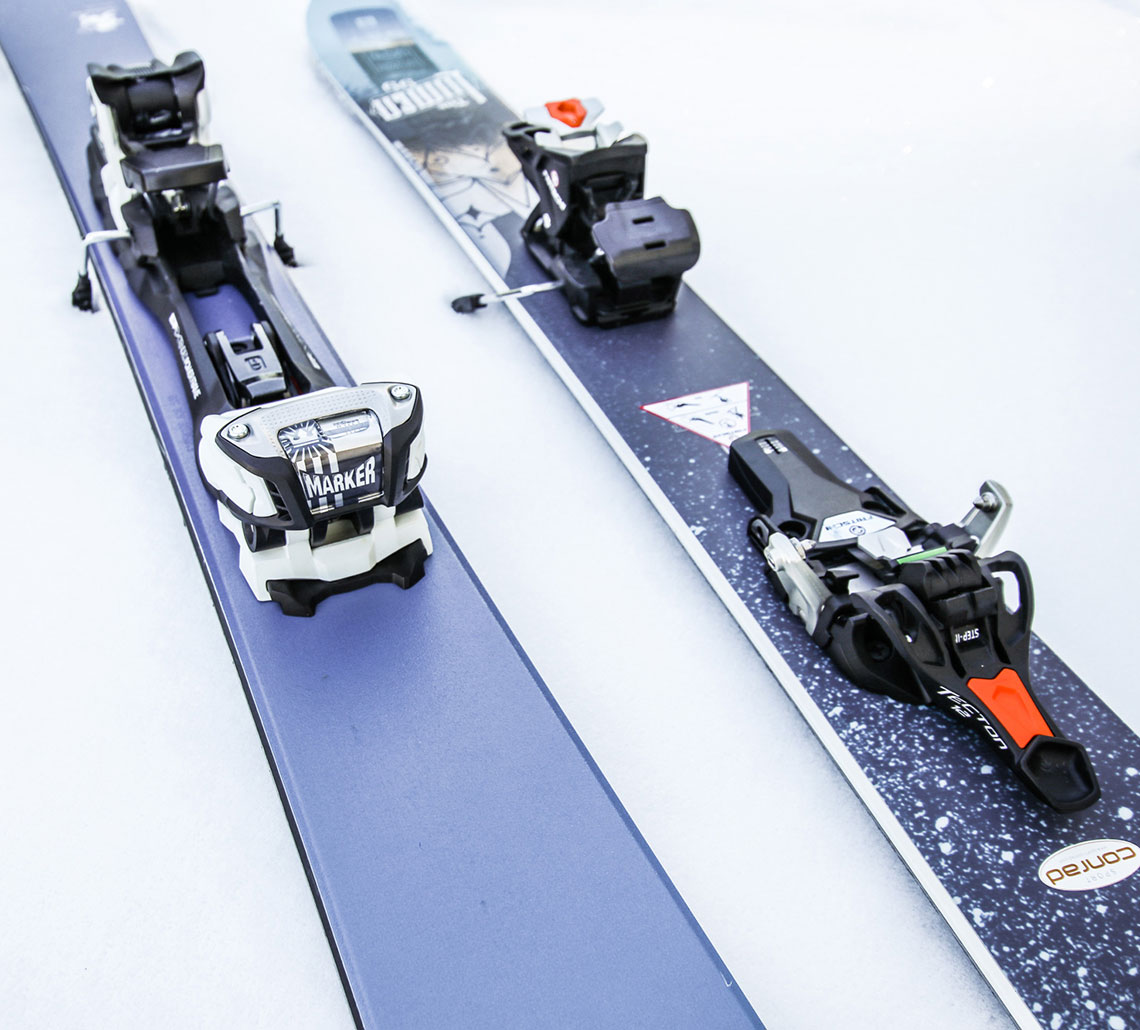
Both systems have their pros and cons. Originally, one would have said that pin bindings were mostly for the uphill oriented mountaineer, while freeriders would only use frame bindings. But this has long changed since pin bindings are constantly being developed further.
The frame bindings, its pros and cons
The frame binding secures the boot the same way a regular alpine binding does, using toe and heel pieces. In the ascent, the entire frame moves with each step. For the descent, the heel piece is fixed on the ski. Entering the binding works the exact same as with alpine bindings, simply by stepping in. This ease of entry is one large advantage of the frame binding. It is also compatible with all ski boots, be it regular alpine ski boots or touring ones (all light boots will not work with this system).
As of this, when mounted correctly, the binding fulfills DIN-/ISO-Norms. The frame binding is easy to handle also in rougher conditions, meaning entering and exiting the binding is rather easy also in deep snow or steep terrain. Due to this, the binding offers a high degree of safety. The wider plate on the ski ensures a stable connection between ski and boot, giving control and performance.
Also, the binding offers high release values. This is especially relevant to those, who love going crazy in the deep powder, jumping cliffs and doing great drops. A disadvantage to this binding is its higher weight. The binding does not only weigh more itself, it also has to be lifted with each step. Especially on longer tours, this can lead to a high energy consumption.
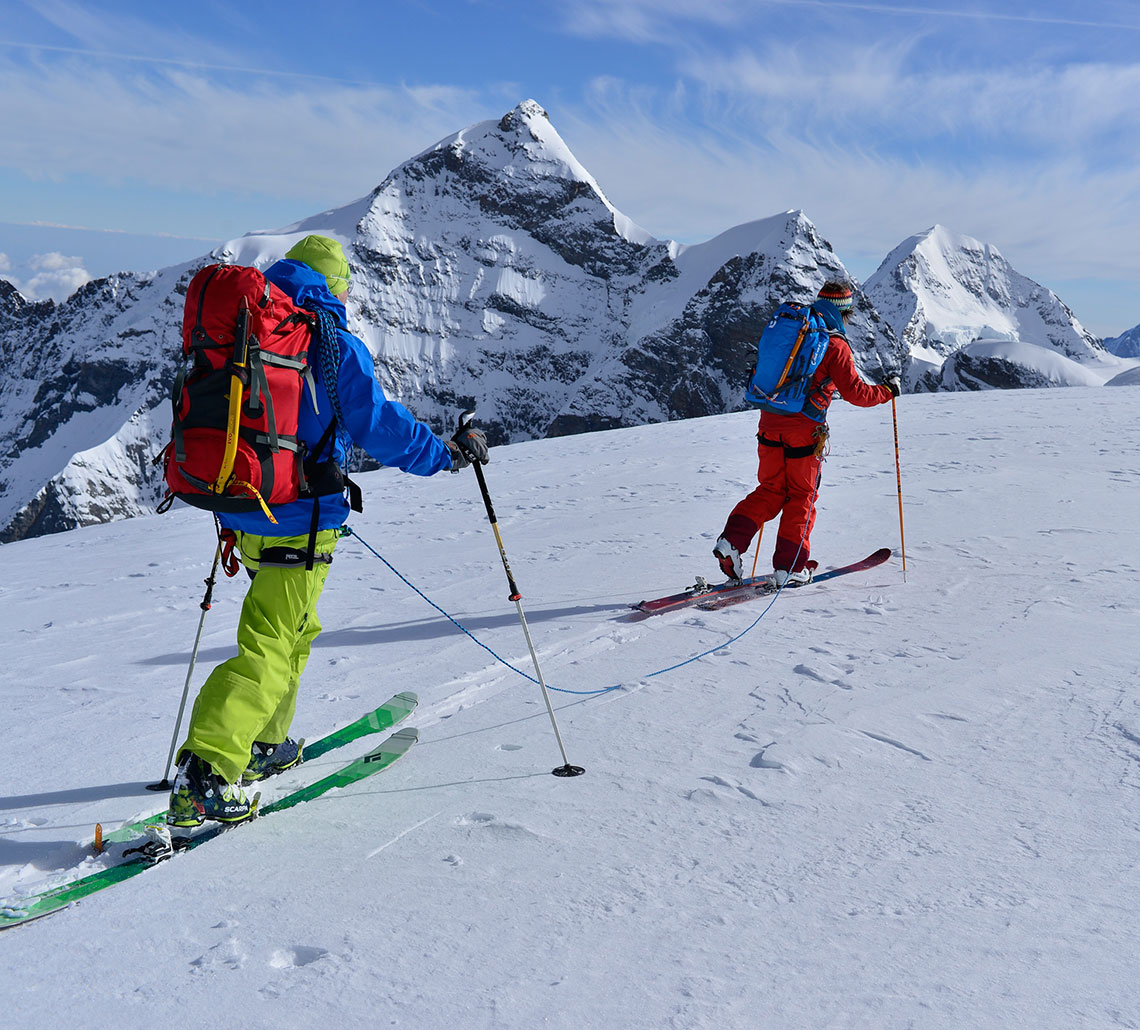
The tec binding, its pros and cons
Pin bindings are entirely different to frame binding in how they function. There is no frame, instead, the boot is secured in the binding in the toe piece via two metal pieces. These so-called pins lock the boots on the sides. Due to this mechanism, the binding is not compatible with alpine ski boots. Instead, it is necessary to use specific touring boots. There are also some alpine boots with pin inserts available. Generally however, this is advisable anyhow since the alpine ski boots are not only much heavier, they are also not as flexible as one would oftentimes want their touring boots to be. In the descent, the boots are then locked to the binding in the back.
A great advantage with the pin binding is its light weight. It is generally lighter than the frame binding, plus when going uphill, you do not lift the binding with each step. Since there is no frame between the boot and the ski, the boot is closer to the ski itself. This makes the turning in deep snow easier and, due to a lower centre of gravity and change in leverage effect, ensuring a more direct transfer of power. For beginners, the pin binding might take a while to get used to at first, since handling the binding is a bit trickier than with frame bindings. Especially in deep snow or steep terrain, getting into the bindings can become difficult. But some manufacturers such as Marker or Dynafit have developed their own entry aids which are part of the toe piece. Thanks to its low weight, the binding is especially interesting to those, who put much emphasis on the ascent.
Also, those doing race touring will use pin bindings. Special race touring bindings are not equipped with adjustable release values, ski stoppers or climbing aids to make them even lighter. Over the past years, pin bindings have developed a lot, having become popular also in the area of freeriding. Downhill oriented bindings such as the Marker Kingpin or Dynafit Beast bindings have higher release values and great stability in difficult terrain.
Which binding suits who
Frame bindings: Due to its easy handling, these bindings are very much suited for beginners. Also, for those only doing short ascents, the frame binding is a good pick. In the area of freeriding, frame bindings are very popular with skiers who ski very aggressively, jumping cliffs and doing drops.
Pin bindings: Whoever puts emphasis on lightest weight possible, should go for a tec binding. As for example the race touring binding ATK SLR Release Touring bindings, weighing only 132g. Any other ascent oriented tourer will also prefer a tec binding such as the Dynafit TLT Radical 2 ST with its 559g. Descent oriented pin bindings with higher release values such as the Marker Kingpin 13 weighing 730g are perfect for freeriders.
Other important factors when purchasing touring bindings
What is very important when purchasing touring bindings is the right release, or z-value. It assures release in case of a crash or hits. For lightweight, careful skiers, the needed release value will be lower than for a very aggressive, heavier skier. Also, the bindings release differently. The various manufacturers’ technologies are oftentimes patented or certified. Next to finding the right system, there are also a couple of other points to pay attention to. As for example the ease of usability of the climbing aids, the easier the better. Generally, touring bindings come with a flat mode and two climbing modes. Race bindings however will only have the modes walk and ski. Also, the compatibility with crampons might be important to some. These give additional support when the slope is very icy or harsh. For most bindings, these can be bought separately and mounted accordingly. Also, ski breaks are relevant. These ensure that the ski will not slide down the entire slope in case of a release. Frame bindings are generally always equipped with ski breaks. Tec bindings sometimes also have them integrated, sometimes these can be purchased separately.
Read more regarding touring bindings
- Ski touring Guide: Find the best equipment for your next ski tour